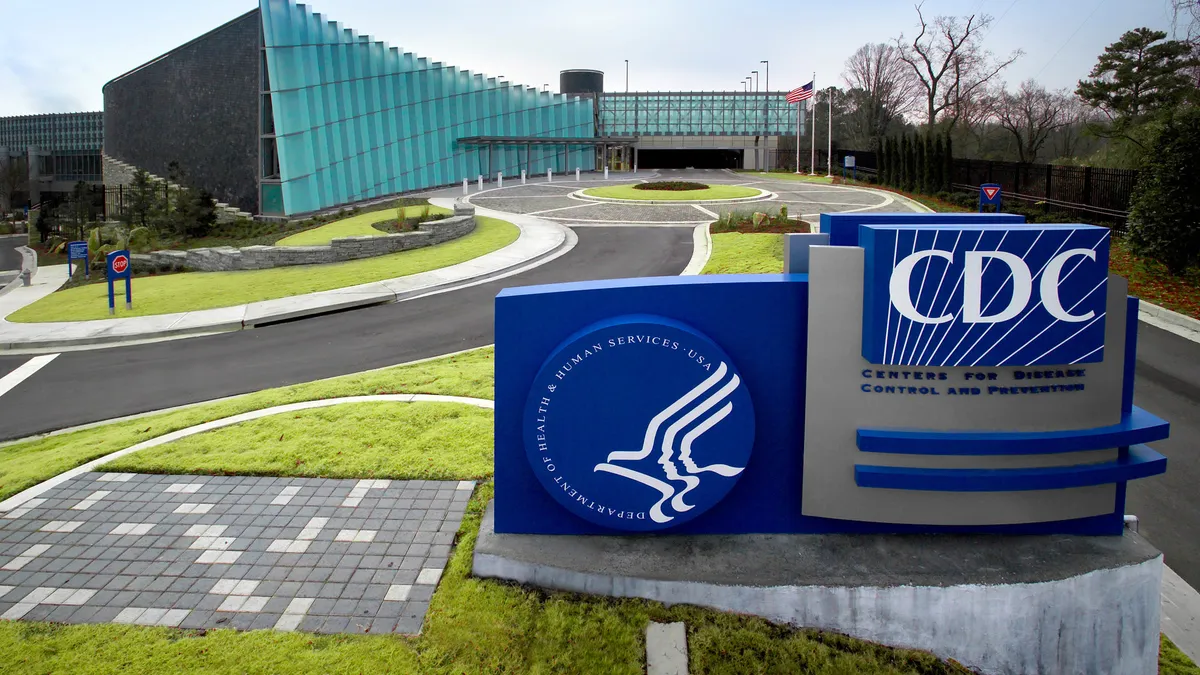Dive Brief:
-
FDA has granted emergency use authorization to a test from the Centers for Disease Control and Prevention designed to determine if a patient is infected with influenza or the novel coronavirus.
-
The agency said Thursday the test will enable healthcare professionals to tell if respiratory symptoms are due to seasonal flu or COVID-19 using a single sample. FDA has authorized similar combination tests from BioFire Diagnostics and Qiagen.
- The authorization comes five months after CDC became the first organization to receive an EUA for a coronavirus test. That distinction was marred after contamination led to a botched rollout leaving the U.S. with limited testing capacity at the start of the outbreak.
Dive Insight:
The 2020-2021 influenza season will pose new challenges to the public health response to the coronavirus pandemic. With two viruses that cause respiratory symptoms circulating, physicians and public health officials will need to know whether patients have COVID-19 or flu to make informed decisions about care and actions to control the spread of the pathogens.
Physicians and public health officials could generate that information by using two test kits, one for COVID-19, another for seasonal flu, on every patient that presents with respiratory symptoms. However, that two-test approach would use up limited reagents and testing capacity.
In light of those issues, CDC has developed a combination diagnostic that tests for the coronavirus SARS-CoV-2 and the A and B forms of influenza. The agency's EUA comes months after BioFire and Qiagen got FDA backing for similar tests.
CDC said it has evaluated the combination test kit, Flu SC2, at its own facilities and three other public health laboratories. The multi-site performance evaluation comes months after non-CDC laboratories generated inconclusive results using CDC’s original coronavirus test, slowing the diagnostic rollout.
The public health agency developed the new test using SARS-CoV-2 genomes that were not available when it created its original diagnostic. CDC said the use of the newer genomes is likely to improve the performance of the test.
In filing for the EUA, CDC presented data on the use of the test to analyze 115 samples, most of which were infected with either SARS-CoV-2, influenza A or influenza B. The test correctly identified all the samples, resulting in an overall percent agreement of 100%. CDC’s original SARS-CoV-2 test also had a 100% agreement in the agency’s own evaluation.
With BioFire and Qiagen generating similar performance data on their tests, the U.S. could go into the flu season with three combination diagnostics. That arsenal may prove valuable in what some observers fear could be a perfect storm for the spread of multiple viruses in the country.
“If there is COVID-19 and flu activity at the same time, this could place a tremendous burden on the healthcare system related to bed occupancy, laboratory testing needs, personal protective equipment and healthcare worker safety,” CDC Director Robert Redfield said in prepared remarks to a House committee late last month.










